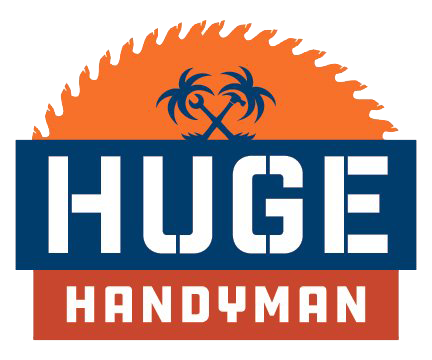Top 5 Things that are missed in “flipped” bathrooms
Sometimes they skip a step or two ...
5 Things to Watch Out for in the Bathroom of a Flipped Home
Bathrooms are a big selling point in flipped homes—and often where flippers cut the most corners. At HUGE Handyman, we’ve seen the ugly truth behind beautiful finishes. Here are 5 common bathroom red flags in flipped homes—and how you can protect yourself before you buy.
1. Bad Grout Work (and No Sealing)
How to tell:
Inspect tile grout lines in the shower, floor, and backsplash. If lines are uneven, already cracking, or show gaps, that’s a red flag. If grout feels powdery or crumbles when you press it, it probably wasn’t sealed—or was mixed improperly.
What to do:
If the grout is failing now, it’ll only get worse. Budget to regrout and seal, or ask your handyman to test the area and reseal properly. Sealed grout resists water, mold, and staining—especially critical in wet areas like showers and floors.
2. No Proper Shower Waterproofing
How to tell:
Waterproofing should happen behind the tile—not on the surface. If the shower was added quickly, or looks brand new but the seller can’t explain how it was built, be cautious. Signs include musty smells, stained drywall on the ceiling below, or cracking grout/caulk within weeks of the flip.
What to do:
If you suspect no waterproofing was done, get a contractor to check moisture levels or inspect beneath tiles near the drain. If needed, remove a tile to verify the presence of a waterproof membrane. No membrane? You’ll want to rebuild the shower—properly.
3. Loose or Poorly Installed Toilets
How to tell:
Sit on the toilet and rock gently—does it shift or wobble? That’s a clear sign it wasn’t shimmed or anchored correctly. Also look for water stains at the base or soft flooring around it—this can signal a failed wax ring or slow leak.
What to do:
Have the toilet pulled and reinstalled with new hardware and a wax or rubber seal. If the subfloor is compromised, you may need localized repair. Don’t ignore it—slow toilet leaks can destroy flooring and even joists over time.
4. Improper Ventilation or No Fan at All
How to tell:
Bathrooms need fans—not just windows—for proper ventilation. If there’s a fan, test it. Turn it on and hold a tissue near the grille: if the tissue doesn’t cling, it’s not working. If there’s no fan at all, steam buildup will damage paint, grout, and trim.
What to do:
Install or upgrade the fan to a model rated for the room’s size (with a humidity sensor if possible). Make sure it’s vented outside, not into the attic. This simple fix prevents mold, peeling paint, and long-term moisture damage.
5. Low-Quality Vanities & Plumbing Hookups
How to tell:
Open the vanity doors—look underneath. Are the drain and supply lines properly aligned, or do they twist awkwardly? Are there signs of leaks, rusted fittings, or rough drywall cuts? Press the cabinet sides—flimsy materials or water damage often mean a rushed install.
What to do:
Replace low-end vanities with solid wood or moisture-resistant materials. Have a plumber tidy up misaligned lines or leaks. If you’re not sure, ask your handyman for a simple plumbing check before you move in.
Don’t Let a Pretty Bathroom Fool You
Cosmetic upgrades are cheap. But when bathrooms are flipped without care, the problems are behind the walls and under the floor. At HUGE Handyman, we help buyers avoid these headaches—or fix them the right way before they get worse.




